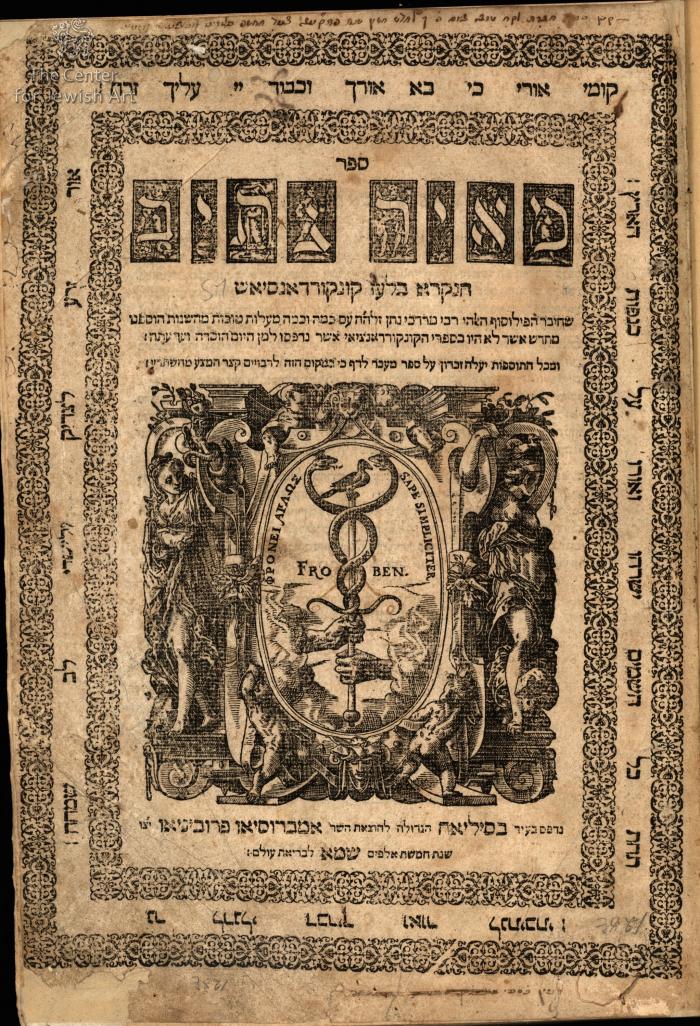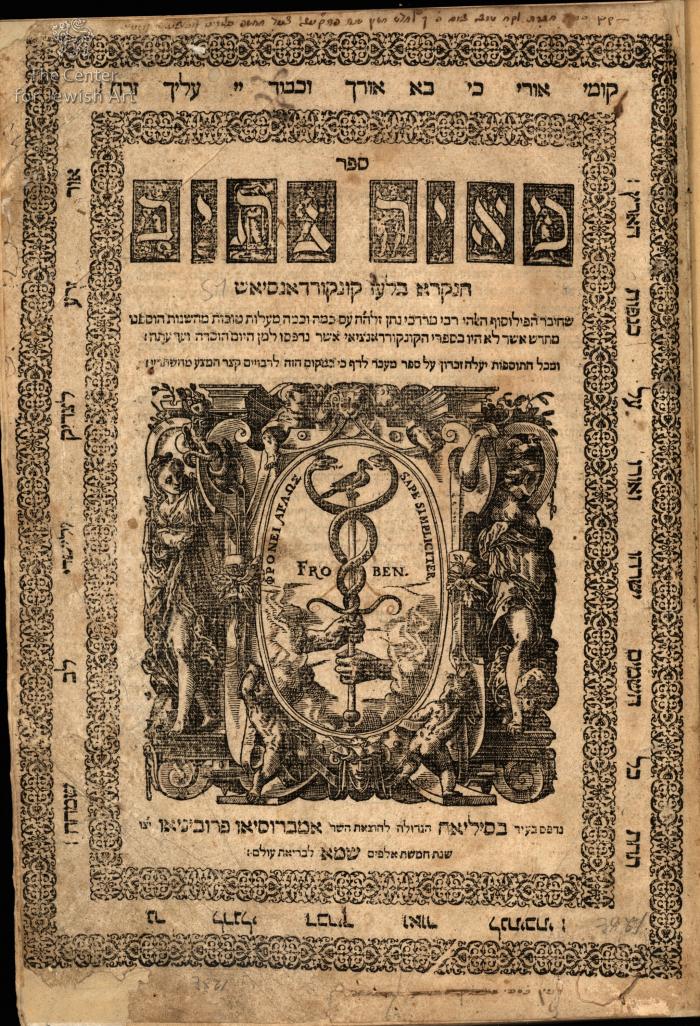Obj. ID: 37170 Meir Nativ by Mordechai Nathan, Basel, 1581

sub-set tree:
This text was prepared by William Gross:
The first first Hebrew biblical concordance. It was compiled by R. Mordechai Nathan, a physician in Avignon, who was also, possibly, a teacher or correspondent of the famed R. Joseph ben Solomon Colon (Maharik, c. 1420 – 1480), who refers to him with great respect. Confusion over the author’s name stems from the fact that the inner title page gives it as Mordechai Nathan, while the introduction is signed by Isaac Nathan (leading some to attribute the work to Isaac ben Kalonymos Nathan).
R. Mordechai Nathan wrote Me’ir Nativ as a polemic tool. He writes that until he was fifteen, his only knowledge of the Bible came from his Talmudic studies. However, contact with Christians, awareness of their anti-Semitic writings, and being compelled to engage in disputes with them, where he observed the value of the Latin concordance (prepared in the 13th C) to his opponents, compelled him to pen the first Hebrew concordance. The project took him 10 years, even with assistance (1437 – 1448).
The concordance is organized alphabetically, with little consideration to the order of verbs and nouns (other parts of speech are omitted entirely). The books of the Bible are in the order of the Latin Vulgate rather than the Hebrew Bible, indicative of its purpose in disputations. Christian scholars engaged in the study of Hebrew attached great importance to the work, and the later concordances of Marius de Calasio and Johann Buxtorf, the Younger, were built on it.
The concordance was first printed in Venice in 1523. Three editions were published by Froben in Basel in 1581: one entitled Ya’ir Nativ, another entitled Me’ir Nativ (represented here), and a third (intended for a Christian market) also entitled Me’ir Nativ, but with the Latin subtitle Concordantiae bibliorum hebraicae. The only difference between the three editions is on the respective title page.
Title page with decorative frame and title, and elaborate version of Froben’s printer’s device, which also appears at the end of the volume.
The Froben family of printers had the most significant role in the printing of Hebrew books in Basle. Established by Johannes Froben (1460-1527), the press (which printed its Hebrew books for the Christian-Hebraist market) passed into the hands of his son Hieronymus in 1527, who was later joined by his brother-in-law Nicholas Escopius. Both Hieronymus and Nicholas died in 1564, leaving the firm to Hieronymus' sons Ambrosius and Aurelius. At the end of the 1570's, Ambrosius, who managed the firm, began to print Hebrew books for Jews. For this purpose he employed the master printer Israel b. Daniel Zifroni, with whom he worked both in Basle, and, later, in Freiburg-im-Breisgau (in Baden, Germany).




